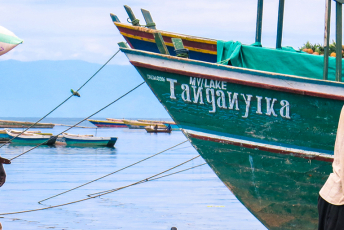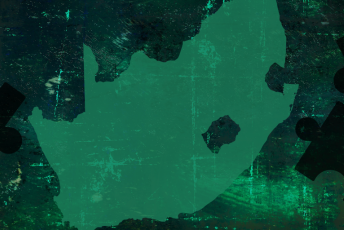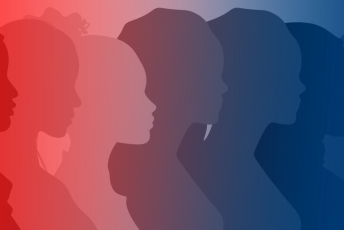Loske, 19, from Moroto District in the Karamoja region of Uganda, lives in a tiny mabati (iron sheet) room in Nairobi’s Majengo slums with two other Karamojong girls. She has been trafficked twice – first within Uganda, and then across the border to Kenya.
She is just one of many young women in the area who have been sold by their parents, guardians, or relatives at local markets, for as little as US$5.46. Girls trafficked from Moroto District are transferred to Kampala then Busia in Uganda, and then to Nairobi in Kenya, where they are employed as domestic workers.
Loske’s story is typical of their journey. She was trafficked in 2017 at the age of 15 from Moroto by a female relative who runs a cereal business in Busia, where her first job was to dry maize and beans. Her salary was US$4.27 (UGS15 000). After two months, her employer received a call to send two girls to a family in Garissa, Kenya. Loske and another girl were sent by bus.
She worked for a family in Garissa for eight months. Being underage and undocumented meant she was particularly vulnerable. She was subjected to sexual harassment by young men in the household – one of the reasons she quit her job. She was given US$9.28 (KES1 000) for her bus fare back to Busia.
However, the money got her only as far as Eastleigh in Nairobi. She didn’t know anyone in the city, but someone directed her to other Karamojong girls in the neighborhood, and there she met a cousin who helped her get a job as a domestic worker for a family. Her work included taking care of babies, washing clothes, and cleaning the house.
After working for the family for some time, Loske’s employer accused her of stealing clothes. She refused to pay Loske, who was arrested and later released. Loske then moved in with other Karamojong girls in Majengo, where she now does odd jobs such as washing clothes for families in the neighborhood to survive.
The Eastern Africa Child Rights Network of Civil Society Organisations estimates that there are over 3 000 Karamojong girls working as domestic workers in Eastleigh, where they are paid an average monthly salary of 50 US cents (UGS1 759.78). Conservative estimates, however, reveal that since 2019 over 9 000 girls have been bought at markets such as Arapai, Chapi, and Sire in north-eastern Uganda and trafficked to various destinations.
In 2018, the United Nations’ Food and Agriculture Organization identified Karamoja as the poorest region in Uganda. A study by End Child Prostitution and Trafficking International noted that Karamoja youth are vulnerable at the individual, household, and community levels.
Trafficking of girls from Karamoja to Nairobi is driven by household poverty, the strength of the Kenya shilling compared to the Ugandan shilling, and weak social protection mechanisms.
Family referrals and peer pressure among girls from Karamoja to look for jobs in Nairobi also play a critical role in the trafficking of girls to Kenya’s capital, as is clear from a recent documentary by the Kenya Television Network. In the video, two older girls mention meeting their cousins who offer them accommodation and connections to enable them to settle in Nairobi.
A 2019 Ugandan newspaper report quotes a Member of Parliament for Matheniko alluding to markets in Uganda where girls are sold and then trafficked to several destinations in Kenya.
Mutuku Nguli of the Counter Human Trafficking Trust-East Africa told ENACT that trafficking rings that exploit Karamoja girls operate in the villages in north-eastern Uganda, as well as on both sides of the Kenya-Uganda border. These include families, motor vehicle transporters, boda boda (motorcycle) transporters, and even young women who facilitate the trafficking of underage girls to Nairobi.
Stemming the tide of trafficking across the border will require much more than the enforcement of anti-trafficking laws in both countries. The trafficking of girls from Karamoja shows the interconnectedness of cross-border trafficking networks, and this calls for local-level social protection mechanisms.
In Uganda, the local councils must be strengthened to monitor and report cases of exploitation and the sale of vulnerable girls in marginalised regions such as Karamoja. Uganda’s whistleblowing policy is in place for this purpose. However, the training of various levels of local councils may also be required to ensure effective monitoring from the village to the sub-county levels.
Mechanisms for the social protection of trafficked girls, such as safe houses, repatriation, provision of household-level economic support, and readmission into schools, must also be strengthened.
Reducing the influx of trafficked girls from Karamoja into Kenya requires public education campaigns by local administration officials such as chiefs, and by civil society organisations such as Stop the Traffik. These campaigns should caution Kenyan households against employing underage girls from Uganda.
In Uganda, local and national government officials need training on the National Referral Guidelines to enable effective collaboration and handling of trafficking cases, especially when repatriating victims from urban centres to rural areas. Similar familiarity with these guidelines should be applied when repatriating Karamoja girls from Nairobi back to Uganda.
A representative of the Counter Human Trafficking Trust-East Africa and Bernard Achieng’, who heads the Youth Mission Initiative in Majengo in Eastleigh, told ENACT that the trafficking of young women and underage girls from Karamoja should be seen as a crisis needing urgent intergovernmental attention.
On the Kenyan side, the Counter-Trafficking in Persons Secretariat together with the National Assistance Trust Fund for Victims of Trafficking are well placed to support civil society organisations that provide psychosocial and economic assistance to Karamoja girls who have been rescued. The secretariat’s mandate to support the rescue, protect and repatriate these vulnerable girls from Karamoja is critical.
Stemming the tide of trafficking and exploitation of Karamoja girls requires direct state-to-state involvement to address underlying structural challenges such as household poverty. This could help young girls like Loske, and protect these vulnerable populations from local trafficking networks.
Yet Karamoja girls continue to iron clothes and wash dishes as they eke out survival. They are largely invisible and jostle for position on the already crowded list of social and economic priorities. Continued civil society advocacy to highlight the crisis is essential to keep the pressure on for collaboration at all levels to ensure protection, prevention, prosecution, and policy implementation that will keep girls like Loske safe from human trafficking.
Willis Okumu, Senior Researcher, ENACT Project, and Annette Kirabira, Executive Director, Rahab Uganda







